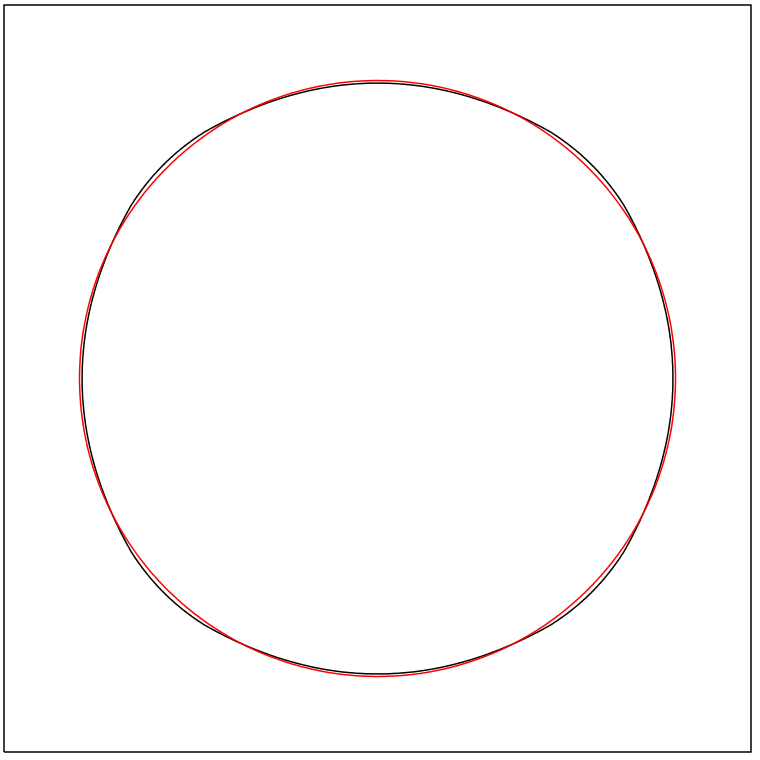This question is inspired by a recent one (and takes a great deal from the answers there). Given a convex subset $\Delta$ of the unit square, let $p(\Delta)$ be the probability that a random line does not intersect $\Delta.$ The exact model for the selection of the lines is that a random point is chosen uniformly on the boundary and then a second is chosen randomly from the union of the other three sides. Consider the circle $\Delta_O$ of radius $\frac1{\sqrt{2\pi}}$ centered at $(\frac12,\frac12),$ I can show that $p(\Delta_0)=0.34470989\dots.$
Let $S$ be the family of convex subsets of the square with area $\frac12.$
What are the best upper and lower bounds you can give on $\sup_{S}p(\Delta)?$
In particular, is there a specific $\Delta \in S$ with $p(\Delta) \gt p(\Delta_O)?$
Here is a certain octagon $\Delta_8$ along with the circle $\Delta_0$ described above. 
I find that the octagon is the best of its kind but it is not quite as good as the circle. I get that $p(\Delta_8)=0.31984\dots.$ The lower left corner is at about $(0.32606,0.11670).$
Will Sawin in a comment to the question mentioned above observes that an optimal region will have no straight sides and also no corners. Any set $t\Delta_O+(1-t)\Delta_8$ with $0 \lt t \lt 1$ will be in $S.$ I don't know if these are worth investigating very deeply since some other octagon might be better for the purpose. Such a convex combination would still have $8$ corners but the segments would be curved. To deal with the corners on this, or some other $\Delta$ with corners, we could, for a very small positive $\epsilon,$ take all points within $\epsilon$ of a point of $\Delta.$ This would enlarge the area a bit so we would then shrink the smoothed figure to restore the correct area. This smoothing will fix corners but not straight sides (of length exceeding $\epsilon.$)
It seems clear that an optimal region has the same $8$ lines of reflective symmetry as the square. I'm not claiming to have a proof of that, nor am I asking for one.
In an answer to the linked question Will Sawin also makes an impressive start on a proof on finding the optimal set using the Calculus of Variations. I recommend reading it. The question here is more humble, just beat the circle. Perhaps there is a $16$-gon that succeeds or gets close. If so, it could perhaps be massaged to do even better.
An upper bound is $p(\Delta) \lt \frac23.$ It is given by Christian Remling. He calls it crude, and I do think it is pretty far from optimal, but it is also the record that I know of so far and the proof sketched is very nice.



